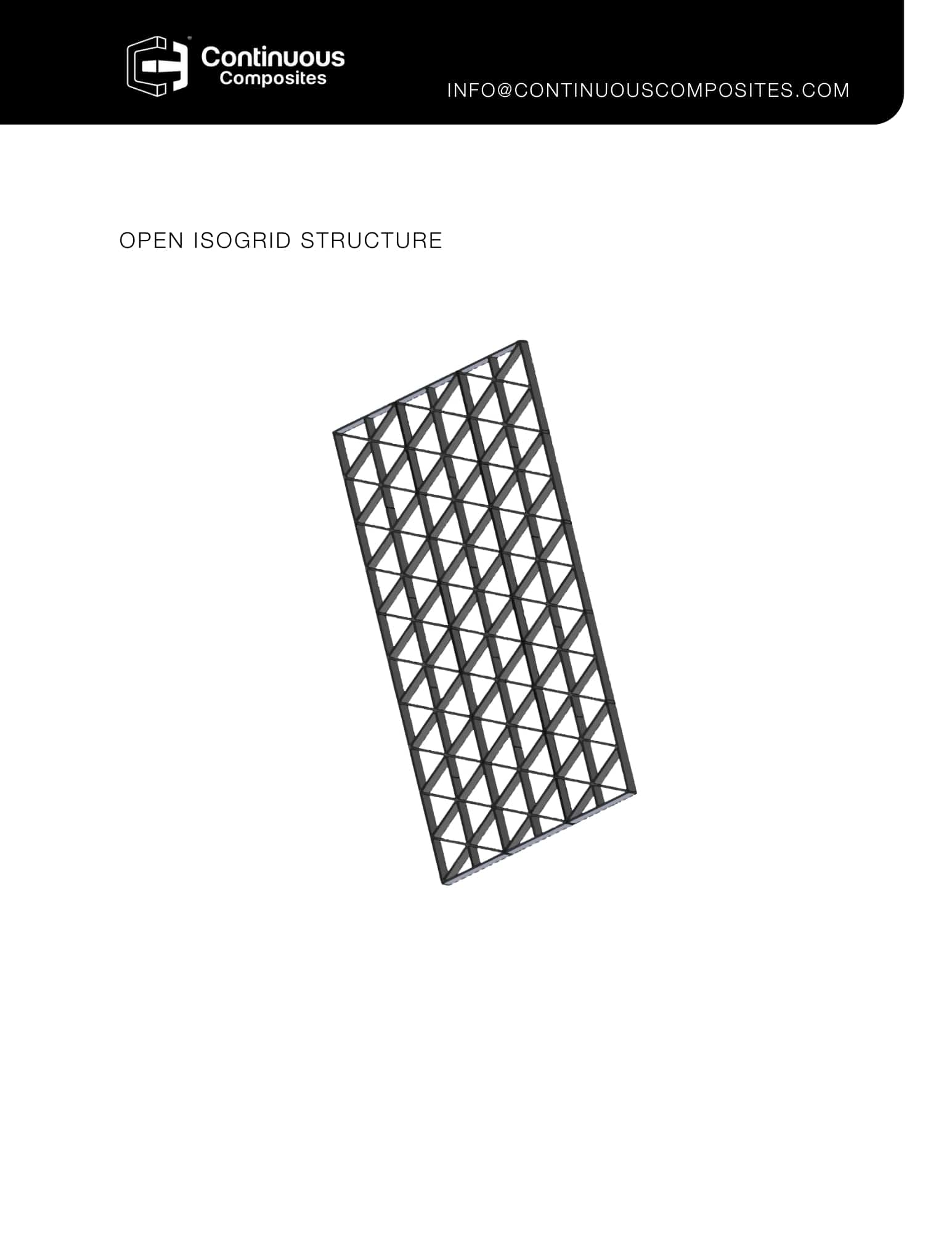Continuous Composites, a pioneer of advanced® composite 3D printing technology, has been chosen by NASA’s Small Business Innovation Research (SBIR) Program to additively manufacture low Coefficient of Thermal Expansion (CTE) open isogrid composite structures for space applications, using its patented Continuous Fiber 3D Printing technology, CF3D®.
More from the News
In space, objects orbiting the earth experience drastic temperature changes when on the dark side of the earth compared to the light side. Therefore, precision objects such as satellites and optical benches require low to zero CTE to prevent warping or distortion from the expansion and contraction due to the significant temperature swings.
“This contract builds upon the work we have been doing in the DoD and commercial aerospace sector, and we’re excited to introduce our unique capabilities to the space industry.”
This NASA award will demonstrate CF3D’s advanced robotic steering of individual, continuous carbon fiber tows to print and test a flat 1.6’ by 3.3’ open isogrid rib structure, which will have a low CTE. CF3D printed isogrid structures can be deposited onto a support surface of many different shapes, including flat, cylindrical, spherical, conical, etc. The resulting part can be optimized for the desired strength and stiffness depending on launch and space loads.
CF3D allows for the manufacture of composite structures which are impractical to produce with traditional fabrication methods. One such structure is this open isogrid rib structure which has applications in many industries, including space and aerospace. By utilizing continuous fiber reinforcement, snap curing photopolymers, and advanced robotics, CF3D can drastically reduce the time and cost of creating open isogrid composite structures.
“Given my background in composite design for space applications, I’m excited to demonstrate our unique fiber steering capabilities for this NASA project. This printed isogrid will have very little to zero CTE which is the goal for these types of space structures,” says John Brendel, Application Engineer and technical POC on this NASA SBIR. “This contract builds upon the work we have been doing in the DoD and commercial aerospace sector, and we’re excited to introduce our unique capabilities to the space industry.”
Subscribe to AM Chronicle Newsletter to stay connected: https://bit.ly/3fBZ1mP
Follow us on LinkedIn: https://bit.ly/3IjhrFq
Visit for more interesting content on additive manufacturing: https://amchronicle.com/
For more information and case studies on metal additive manufacturing register for metal additive manufacturing symposium : https://amchronicle.com/metal-additive-manufacturing/


